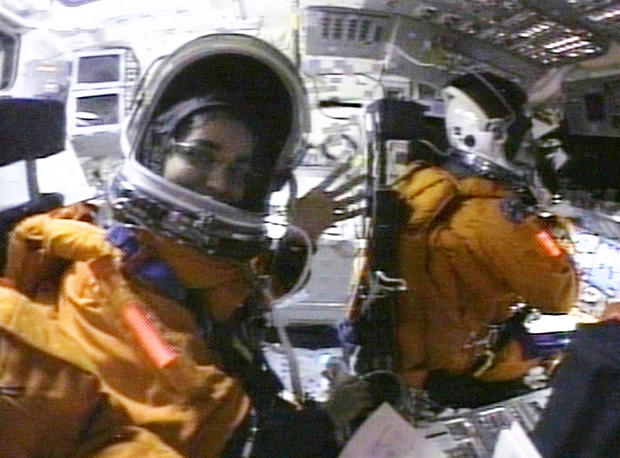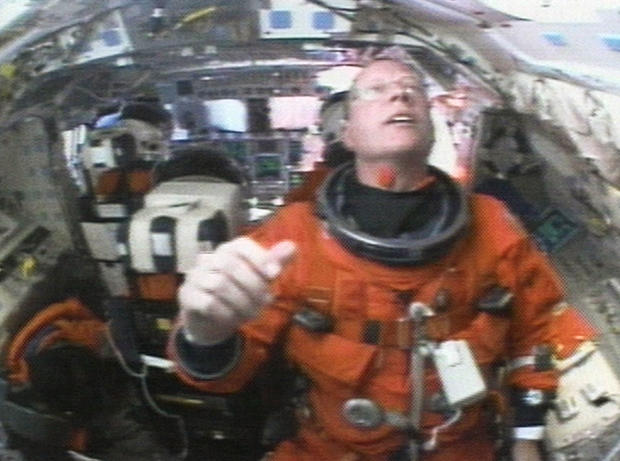



When Columbia re-entered the atmosphere of Earth, the damage allowed hot atmospheric gases to penetrate and destroy the internal wing structure, which caused the spacecraft to become unstable and break apart. NASA managers limited the investigation, reasoning that the crew could not have fixed the problem if it had been confirmed. Previous shuttle launches had seen minor damage from foam shedding, but some engineers suspected that the damage to Columbia was more serious. The crew performed nearly 80 experiments studying Earth and space science, advanced technology development, and astronaut health and safety.ĭuring the launch of STS-107, Columbia 's 28th mission, a piece of foam insulation broke off from the Space Shuttle external tank and struck the port wing of the orbiter. On 16 January 2003, Chawla finally returned to space aboard Space Shuttle Columbia on the ill-fated STS-107 mission. This mission was repeatedly delayed due to scheduling conflicts and technical problems such as the July 2002 discovery of cracks in the shuttle engine flow liners. In 2000, Chawla was selected for her second flight as part of the crew of STS-107. From left to right: Brown, Husband, Clark, Kalpana Chawla, Anderson, McCool, Ramon After the completion of STS-87 post-flight activities, Chawla was assigned to technical positions in the astronaut office to work on the space station.
#Columbia space shuttle disaster software#
A five-month NASA investigation exonerated Chawla by identifying errors in software interfaces and the defined procedures of the flight crew and ground control. During STS-87, she was responsible for deploying the Spartan Satellite which malfunctioned, necessitating a spacewalk by Winston Scott and Takao Doi to capture the satellite. On her first mission, Chawla traveled 10.4/6.5 million miles in 252 orbits of the earth, logging more than 376 hours (15 days and 16 hours) in space. She spoke the following words while traveling in the weightlessness of space, "You are just your intelligence." She had traveled 10.67 million km, as many as 252 times around the Earth. Chawla was the first Indian woman to go in space. Her first space mission began on 19 November 1997, as part of the six-astronaut crew that flew the Space Shuttle Columbia flight STS-87. She joined the corps in March 1995 and was selected for her first flight in 1997. citizen in April 1991, Chawla applied for the NASA Astronaut Corps. Chawla held a Certified Flight Instructor rating for airplanes, gliders and Commercial Pilot licenses for single and multi-engine airplanes, seaplanes and gliders. as vice president and Research Scientist specializing in simulation of moving multiple body problems. In 1993, she joined Overset Methods, Inc. Much of Chawla's research is included in technical journals and conference papers. In 1988, Chawla began working at NASA Ames Research Center, where she did computational fluid dynamics (CFD) research on vertical and/or short take-off and landing (V/STOL) concepts. Chawla went on to earn a second Master's in 1986 and a PhD in aerospace engineering in 1988 from the University of Colorado Boulder. After earning a Bachelor of Engineering degree in Aeronautical Engineering from Punjab Engineering College, India, she moved to the United States in 1982 and obtained a Master of Science degree in Aerospace Engineering from the University of Texas at Arlington in 1984. She went to local flying clubs and watched planes with her father. She completed her schooling from Tagore Baal Niketan Senior Secondary School, Karnal. Kalpana Chawla was born on 17 March 1962 in Karnal, Haryana. Chawla was posthumously awarded the Congressional Space Medal of Honor, and several streets, universities, and institutions have been named in her honor. Chawla was one of the seven crew members who died in the Space Shuttle Columbia disaster when the spacecraft disintegrated during its re-entry into the Earth's atmosphere on 1 February 2003. Her second flight was on STS-107, the final flight of Columbia, in 2003. She first flew on Space Shuttle Columbia in 1997 as a mission specialist and primary robotic arm operator. Kalpana Chawla (17 March 1962 – 1 February 2003) was an Indian-born American astronaut and aerospace engineer who was the first woman of Indian origin to go to space.

Computation of dynamics and control of unsteady vortical flows (1988)


 0 kommentar(er)
0 kommentar(er)
